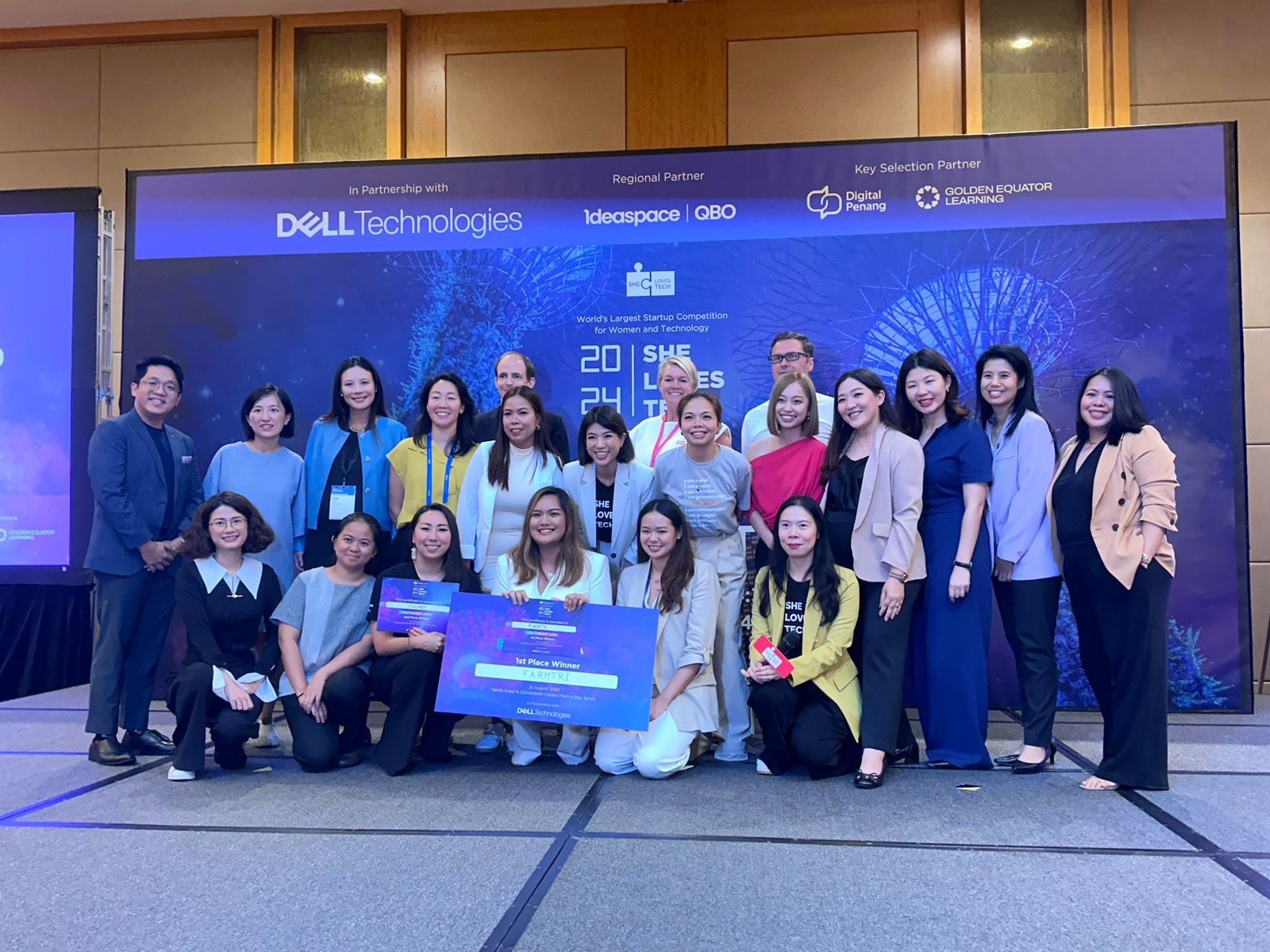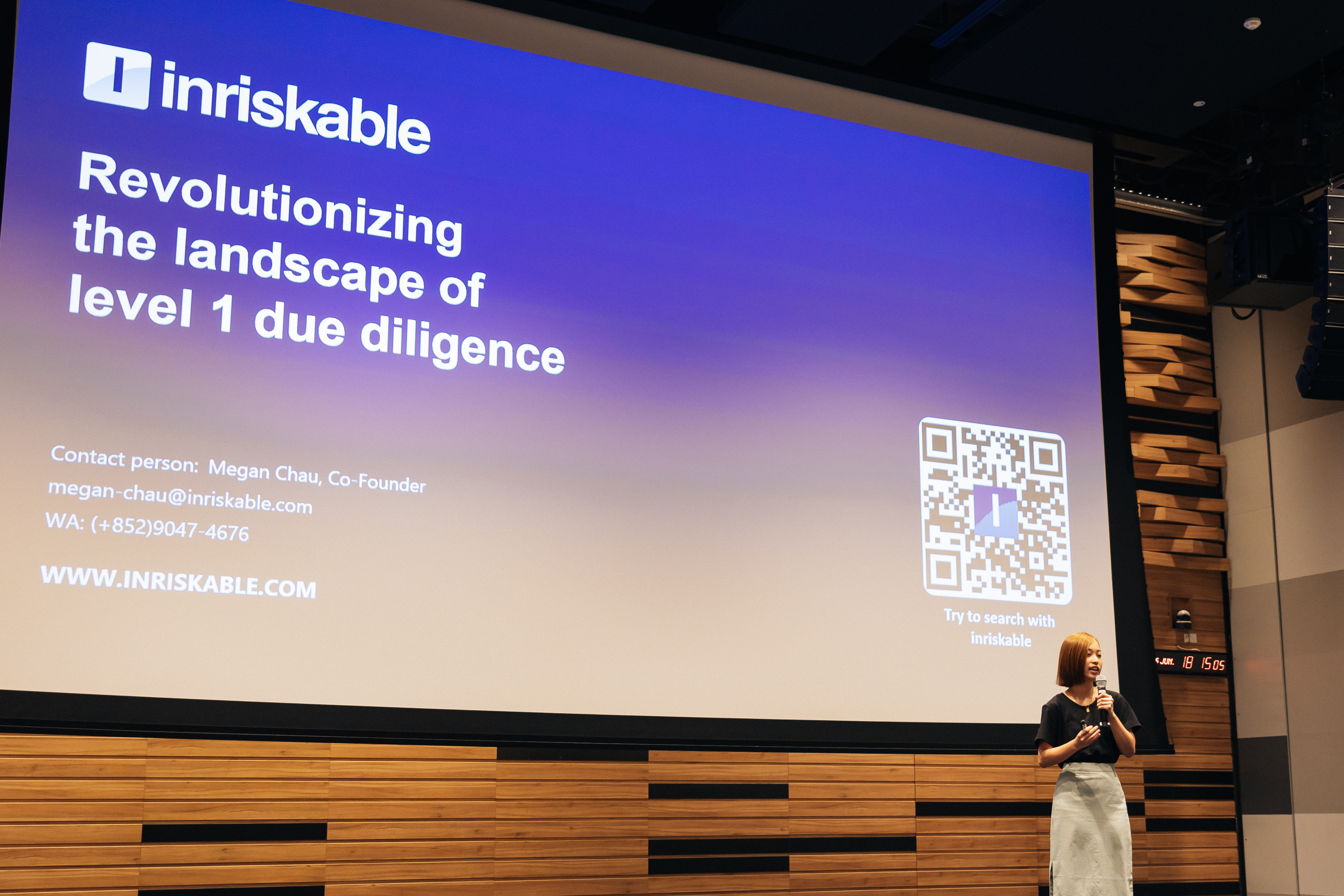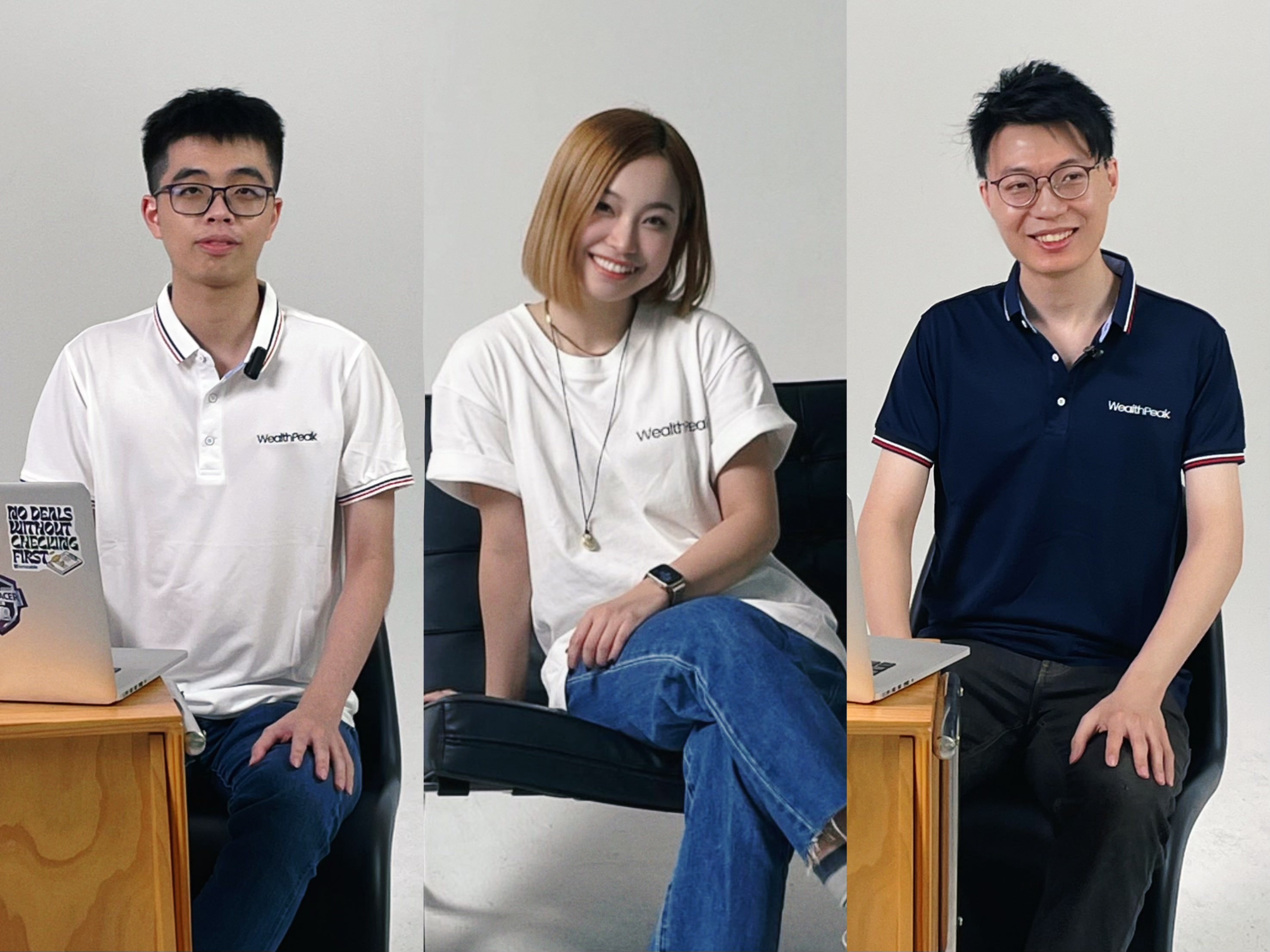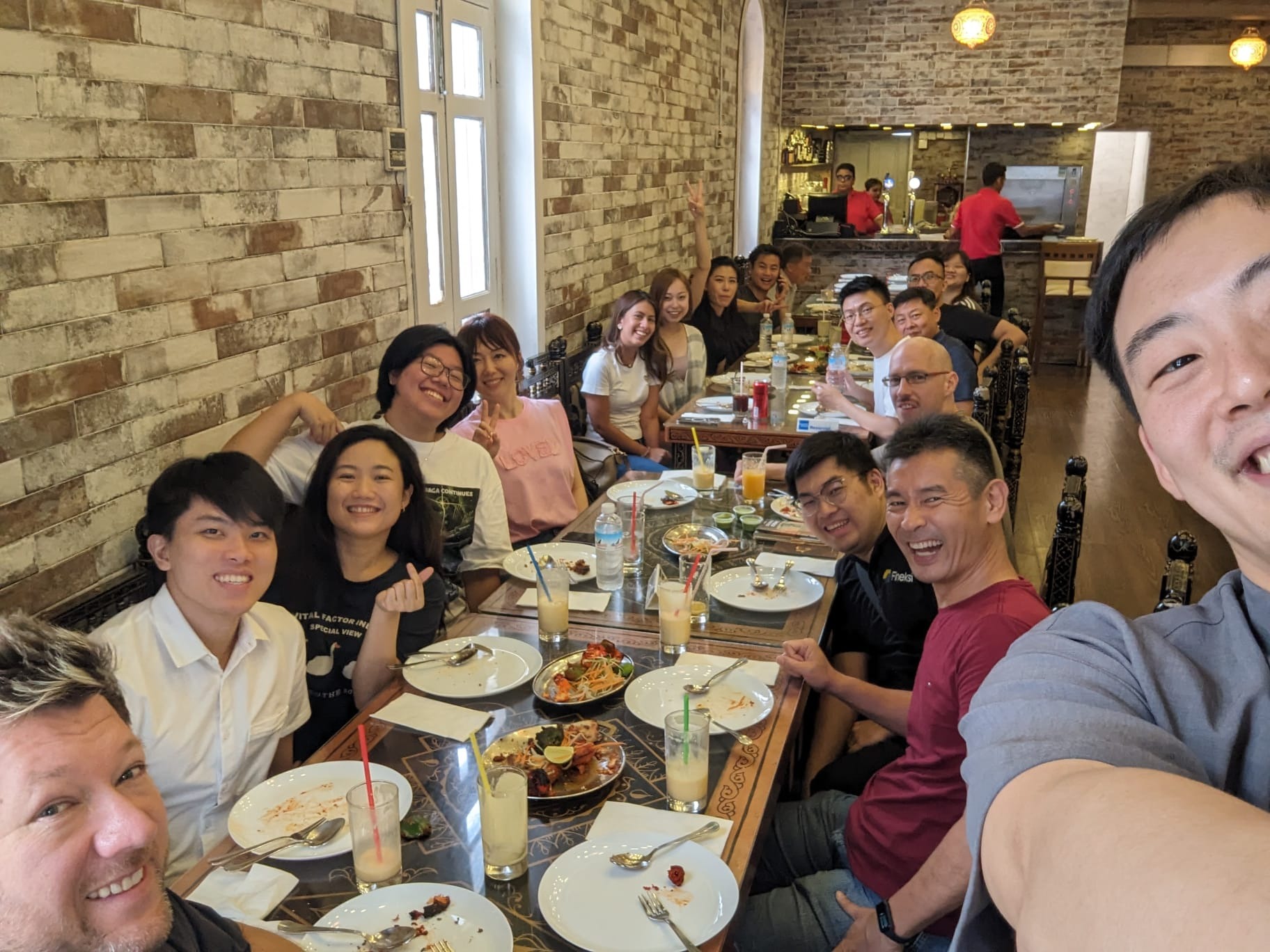Singapore
Ten Questions with Tenity — Megan Chau: Chasing product excellence, enduring the grind, and transforming risk in Asia
Moses Xiao
Moses is the Marketing Manager of Tenity based in Singapore. He is focused on driving growth for fintech startups in APAC.

%20TQWT-2.png)
At Tenity, we believe innovation starts with conversation. Breakthroughs happen when people exchange ideas, challenge assumptions, and see the world differently. These conversations spark stories, stories shape bold ideas, and bold ideas are brought to life by founders with the vision and grit to solve real-world problems.
With Ten Questions with Tenity, we’re opening the door to those stories. We’re sitting down with the founders in our ecosystem to go beyond the pitch decks: to uncover the motivations, mindsets, and defining moments that shape the people building the future of finance and technology.
In this edition, we caught up with Megan Chau, a Batch VII alumna of Tenity’s Spring 2024 Fin/Tech Accelerator in Singapore.
Megan is the Co-Founder and CEO of Inriskable, born from a blend of “invisible” and “risk”. Founded in 2023, Inriskable is reshaping how professionals surface risks and opportunities within private companies—an area historically plagued by opacity and inefficiency. By combining AI and alternative data, the platform helps bankers, investors, and risk teams uncover hidden red flags and sharpen their sales prospecting efforts.
In just over a year, Inriskable has made remarkable strides. The platform now supports over 500,000 users across 26 countries, powering more than 5 million searches to date. Its momentum has earned it recognition as one of Hong Kong’s Hottest Startups of 2024 by Hong Kong Business, as well as a finalist spot at the She Loves Tech Southeast Asia 2024 competition.
From building the product to coining her own take on MVPs, Megan belongs to a rare breed of founders who aren’t just leading, they’re quite literally building the future of data-driven risk intelligence in Asia. In this conversation, she walks us through the first iteration of Inriskable, lessons from selling, the ideas that shaped her, and how Tenity helped sharpen them.

Let’s start with an introduction. What is Inriskable, and what drew you to SME risk and regtech in the first place? It’s solving a very specific, niche problem in a space that’s often overlooked.
I’m Megan, and together with Kenyon Wong, I co‑founded Inriskable, where I serve as CEO. At its core, Inriskable is a data engine we built from the ground up to gather and make sense of private company information.
We saw a huge gap in private company data, especially in Asia. In places like the U.S. or Europe, systems are far more standardized. Metaphorically speaking, private companies in Asia, even those generating millions in revenue, often operate in the shadows. Their data is everywhere and nowhere at the same time. There’s so much valuable information scattered across the internet, unstructured and inconsistent.
Early on, we tried selling to a few companies and quickly found traction with banks, particularly in their risk management departments. They all had the same problem: they couldn’t get a complete picture of the companies they were assessing.
We realized there had to be a better way to make this information accessible and transparent.
That’s when Inriskable evolved into a risk intelligence platform—one that builds automated pipelines to collect, clean, and transform data into meaningful insights for our customers.
Before founding Inriskable, you held roles as a product owner and software engineer. Did you always see yourself as a founder, and how has the experience changed you both professionally and personally?
It was definitely a journey. I didn’t always see myself as a founder, but entrepreneurship has always been in my blood. My great‑grandmother ran a rice wholesaling business in Guangzhou, and back then they even provided credit and capital to their customers.
That kind of financial legacy shaped the environment I grew up in. Even though my mother didn’t get the chance to start something herself, she carried that entrepreneurial mindset and I inherited it too. It wasn’t a push from my family; it was more like a natural inspiration. I’ve always loved building and doing business, so starting a company felt like the right path.
Founding a startup is a huge identity shift. I used to work in corporate, and the difference is night and day.
In a startup, the path to knowing who you are and who you’re not becomes really clear.
Over the past three years, I’ve had my fair share of failures, especially with my first two startups. But those experiences shaped me and helped me grow. Starting up is definitely torturing at times, but you come out stronger.
The early stage is especially brutal. You’re building something from scratch that’s completely new, while also fighting an internal battle. Technically, it’s challenging. Financially, it’s draining. Mentally, it’s full of self‑doubt. You question everything—your product, your ideas, even yourself. On top of that, you’re convincing people that your product is worth believing in, all while hearing conflicting opinions from customers and peers. But if you push through, you really do evolve.

Very few founders, let alone female founders, build the product themselves. You’re a bit of a unicorn in this space. How has being a builder shaped your approach, and how did it lead to your concept of the “Minimal Lovable Product”?
Yes, I do feel unique in that way. It’s rare, especially in Asia, to find founders who are both building the tech hands‑on and selling a market‑specific product. It’s a lot of work and takes time before you see real results.
Going back to my great‑grandmother, she has always been a source of inspiration. She was a solo female founder during a time of deep gender inequality, yet she managed one of the largest rice wholesale businesses in the region. That story stays with me. If she could do it then, we can do it now.
Being an engineer‑founder gives me an edge. I know my product inside out, and that gives me confidence.
We’ve been able to iterate quickly because I could build it myself. If we had outsourced development, we probably would’ve burned through all our capital. This way, we could build exactly the product we wanted.
In the early days, we tried the classic MVP approach. We launched something basic like landing pages and sign‑up links to test ideas and see if people would sign up. But in reality, if you’re building a serious B2B product, especially one that customers pay for, that approach doesn’t work.
Customers are paying out of their own pockets, and they’re critical about every detail. Even if your product is 90% there, that last 10% really matters. We realized nobody was buying our MVP because it was just... bad. Not even for free.
That’s when I started thinking in terms of a Minimal Lovable Product. It means solving a real pain point in a way that makes someone actually want to use and pay for it, even if it’s not perfect. Your product can be a little scrappy, but it has to genuinely address the problem in a way customers love.
You recently launched version 3.1, deepening data coverage in Hong Kong and Singapore. But can you take us back to the early days—what did version 0.1 look like, and what were the hardest challenges in getting there?
Version 0.1 was scrappy, but we were proud of it. It was our foundation. Still, no one bought it. The challenges weren’t just technical; they were also about convincing customers to care.
Firstly, data was a huge hurdle. As you scale, the complexity of managing data grows exponentially. In the beginning, we didn’t even store company information. But once we committed to digging deeper into the problem, we had to process massive volumes—analyzing, cleaning, and structuring everything from the ground up.
On the business side, we worked with several large banks through pilot programs. But none of them went live. That experience taught us two important lessons: first, the problem we were solving wasn’t painful enough for them to act immediately; second, navigating enterprise politics takes time and a different kind of persistence.
That’s when we decided to shift toward a SaaS model. It lowered the entry barrier and reduced the friction in our sales process, while still allowing us to serve enterprise clients.

You’ve mentioned you’re focused on Hong Kong, Singapore, and China, with plans for global expansion. How is that roadmap looking now, and how does WealthPeak AI fit into that vision?
We’ve adjusted our strategy slightly. At first, we aimed to go global. But after a year of building, we realized the value of going deep before going broad.
Rather than expanding horizontally too soon, we’re doubling down vertically. Our strength is in Asia, especially Hong Kong and Singapore, which are financial hubs with rich data on ultra‑high‑net‑worth individuals and private companies. We want to own these markets first before expanding elsewhere.
WealthPeak AI, which officially launches in October this year, is a natural extension of Inriskable. Our platform already collects private and some public company data, mapping out the most promising companies and wealth profiles in the region. WealthPeak AI builds on that data to create actionable insights for bankers.
Private banking is all about relationships. Cold calls rarely work, while referrals are everything. WealthPeak AI uses AI to analyze a banker’s LinkedIn network, uncovering second‑ and third‑degree connections that could lead to valuable referrals—connections they might not even realize they have. It’s about making networks visible and actionable.

A recent report shows that women‑led startups often outperform their male counterparts economically. However, they still face significant barriers to funding due to unconscious bias. Have you encountered this in your fundraising journey?
The fundraising world is tough for everyone, but especially for female founders. Questions about marriage, pregnancy, or family plans come up in ways they don’t for men. Investors often default to a checklist—“Are you single? Are you young?” These biases still exist.
Ultimately, fundraising is about trust and long‑term relationships, not just ticking boxes on a pitch deck.
I’ve learned the importance of building relationships early with investors I genuinely like. For me, fundraising isn’t just a transaction. It’s the start of a long‑term partnership.
You’re fairly active on LinkedIn and have been open about sharing hard truths and valuable experiences. Do you see personal branding as part of a founder’s responsibility, and is there a personal philosophy that has guided you through the highs and lows of building?
I post because I want to share what we’re building. I don’t overthink it. But yes, personal branding matters. If you’re selling SaaS, you need some online presence to tell your story and vision. I don’t see myself as a “key influencer,” but I’ve seen how valuable it is for founders to share their journey authentically. It helps people understand what you’re building and why.
As for my philosophy, I’ve seen all the startup hype cycles—from ride‑hailing to ESG to crypto.
But my core belief is simple: build a startup that lasts.
My family passed down values like integrity, loyalty, and mutual respect—principles that make businesses sustainable. I try to live by that. If people are buying from us today, it means we’re good enough, and I serve them wholeheartedly. If they’re not, I go back and improve the product.
Thinking back to before you joined Tenity Singapore’s Fin/Tech Accelerator, what were the key motivations that led you to apply, and what part of the program has been most impactful for you?
Honestly, I was hungry for funding at the time. Tenity stood out because they’re an accelerator in Singapore with strong mentorship and networks.
I was new to fundraising, and Tenity gave me the guidance I needed—how to pitch, prepare for Demo Day, and really immerse myself in Singapore’s startup ecosystem.
It was a big milestone for us.
Demo Day was a huge highlight, offering valuable exposure. I especially appreciated the masterclasses where real VCs and angels shared their perspectives. It helped me understand how investors think—whether they’re purely focused on returns or committed for the long haul. The in-person workshops were great too. I met friends who’ve since become close allies on this journey.

Since graduating from the program, what milestones are you most proud of—and what’s next on the horizon for Inriskable?
Launching our SaaS portal during the Tenity program was a major turning point. Before that, we were entirely enterprise-focused with no SaaS offering. The shift to SaaS transformed our business model completely.
And because Tenity became an investor, we also had the responsibility to provide regular updates, which kept us accountable. Looking ahead, we want to build products that deliver immediate value. Not just to enterprises, but also to users who can benefit right away.
Lastly, what’s one piece of advice you’d give to an early-stage founder navigating their next strategic decision?
Make sure you know what you’re building and truly love your product. That belief will carry you through every high and low.
As Megan continues scaling Inriskable, one thing is clear: her belief in building products people truly love is as strong as ever. Her journey hasn’t been without setbacks, but each stumble became a lesson that sharpened her mindset and conviction. With a clear-eyed view of Asia’s financial landscape and a no-fluff philosophy shaped by lived experience—not theory—she’s not just watching the future unfold, she’s creating it.
Stay tuned for more Ten Questions with Tenity, where bold ideas come to life. If you enjoyed Megan’s story, be sure to check out our past interviews to discover more inspiring journeys from Tenity founders shaping the future of fintech and beyond.
- Laura Lukito: Blending fintech ambitions, family ties, and builder spirit
- Hussain Elius: From super app founder to global fintech visionary
Inspired by her journey? Apply to Tenity's programs now and let us help you take your startup to the next level. Learn more at https://www.tenity.com/programs
